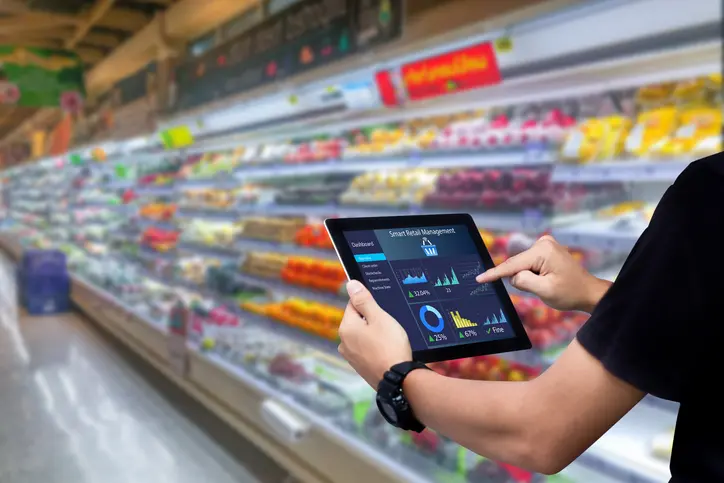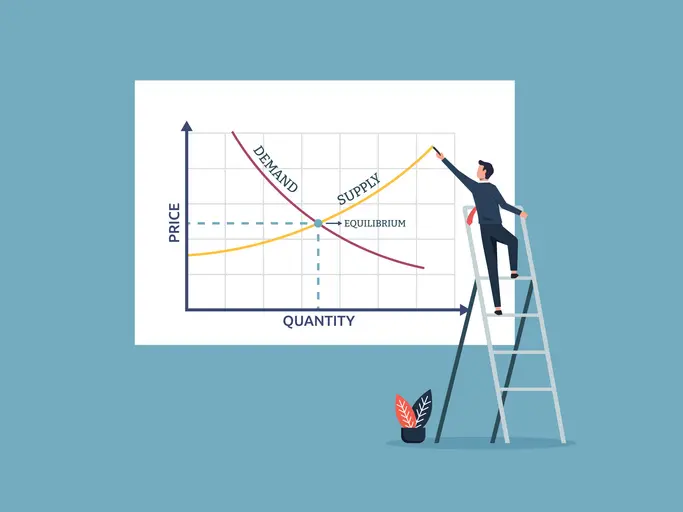It is no secret that inventory replenishment is a vital aspect of any business that deals with physical goods. Replenishing the inventory levels of products that are sold or consumed, and ensuring that the customer demand is met by having enough stock on hand is a process that can lead to more customer satisfaction, operational efficiency, and profitability. In this article, we will explore the concept of inventory replenishment in detail. So follow along to learn more about its definition, significance, process, factors, methods, models, policies, approaches, best practices, strategies, software, and tools. We will additionally look at some of the challenges and opportunities of inventory replenishment in the modern era, as well as some future trends that are currently sewing their seeds in the field.
What is Inventory Replenishment?
Inventory replenishment is the process of moving inventory from a main reserve (for example, a warehouse) to pick-up points (such as stores) where they can be accessed by customers. The main goal is to ensure that the right products are available at the right place, at the right time, and in the right quantity. It is important to note, early on, that inventory replenishment is not to be confused with inventory control. Inventory control, instead, is the process of managing the inventory levels of products within a pick-up point, such as counting, tracking, and ordering. Inventory replenishment, on the other hand, involves activities such as forecasting, planning, scheduling, transporting, and delivering inventory.
Inventory replenishment represents the short-term execution of the wider-scoped, mid to long-term replenishment planning process.
Inventory replenishment holds much importance for a business, as accurately implementing it into your business’s processes can aid in avoiding delays and backorders (which helps maintain customer satisfaction and loyalty), and reduce inventory costs, waste, and discontinuance while maximizing sales and profit margins. Meeting customer demand is a major facet of inventory replenishment, and its extreme importance cannot be overemphasized. Inventory replenishment’s driving force is customer demand, which determines the quantity, quality, and timing of inventory replenishment.
The Replenishment Process
The replenishment process requires constant monitoring and adjustment, as it is a continuous cycle. Let us take a deeper dive into the world of inventory replenishment by assessing the general steps taken in the cyclical replenishment process.
- Forecasting customer demand: Estimating the future demand for each product based on historical data, market trends, seasonality, promotions, and other factors.
- Planning inventory levels: Determining the optimal inventory levels for each product at each pick-up point, based on the forecasted demand, the desired service level, and the inventory turnover rate.
- Scheduling stock replenishment orders: Deciding when and how much to order for each product from the main reserve, based on the planned inventory levels, the lead time, and the reorder point.
- Transporting inventory: Moving the inventory from the main reserve to the pick-up points, using the appropriate mode of transportation, such as truck, rail, air, or sea.
- Delivering inventory: Receiving, inspecting, and storing the inventory at the pick-up points, and updating the inventory records accordingly.
Factors Influencing Replenishment
Nothing good ever comes easy, and inventory replenishment is no exception. It is influenced by many internal and external factors, which can have great, negative, or positive, effects on the demand, supply, and flow of inventory. As we have previously established, customer demand is the primary factor that determines the inventory replenishment needs of a business, and thus, heavily influences when and how inventory is replenished. Additionally, the time it takes for a supplier to deliver the ordered inventory from the main reserve to the pick-up points as well as the supplier’s reliability are two aspects that can greatly affect the inventory replenishment process. They both influence the lead time, the reorder point, and the safety stock, thus emphasizing the necessity for shorter and more reliable delivery times. The same can be applied to supply chain disruptions. Moreover, warehouse space and optimization can reduce inventory costs, improve service levels, and increase sales.
Replenishment Methods and Models
There are various replenishment methods and models that can be implemented, however, it is up to you to decide which is most applicable to your company’s needs and profitability. Some of the most common methods used to determine the optimal replenishment orders for each product, based on the demand, supply, and inventory data include:
- Reorder point method: This method involves ordering a fixed quantity of inventory when the inventory level reaches the reorder point. The average demand, the lead time, and the safety stock determine this point. This method can unfortunately be inaccurate when the demand and lead time are variable.
- Fill-up method: This method involves ordering enough inventory to fill up the available warehouse space, regardless of the inventory level or the demand. This method is suitable for products that have low demand, low storage costs, and long shelf life. The fill-up method can help to reduce ordering and transportation costs. However, it can also lead to overstocking and obsolescence.
- Periodic method: This method involves ordering inventory at fixed intervals of time, such as weekly, monthly, or quarterly, regardless of the inventory level or the demand. The periodic method is suitable for products that have stable demand, low ordering costs, and short lead time, such as fast-moving consumer goods. The periodic method can help to simplify the ordering process, but it can also lead to understocking and overstocking.
- On-demand method: This method involves ordering inventory only when there is a customer order, regardless of the inventory level or the demand. The on-demand method is suitable for products that have high demand, high storage costs, and short lead time. The benefits of this method are that it can eliminate inventory costs, waste, and obsolescence. The disadvantages to this method are that it can also increase ordering and transportation costs, and require high service levels from the suppliers.
- Demand method: This method involves ordering inventory based on the predicted demand, rather than the actual demand. The demand method is suitable for products that have variable demand, high ordering costs, and long lead time, for example, seasonal products. The demand method can help to reduce inventory costs, improve service levels, and increase sales. For seasonal products read our article on anticipation inventory.
- Top-off method: This method involves ordering inventory based on the difference between the maximum inventory level and the current inventory level, instead of the reorder point. Products that have high demand, low storage costs, and long lead time, would suit this method best. The top-off method helps to reduce inventory costs, waste, and obsolescence. However, it can also increase ordering and transportation costs, and require high service levels from the suppliers.
Policies and Approaches for Replenishment
Furthermore, there are also many policies that can be used to help manage replenishment orders and implement replenishment methods. The characteristics and requirements of your products, the availability and reliability of your suppliers, etc. are all important factors to consider when selecting the best policy and approach for your business. Below is a list compiled of the most noteworthy policies:
- Min/Max Policy: This policy involves setting a minimum and a maximum inventory level for each product, and ordering enough inventory to reach the maximum level when the inventory level falls below the minimum level. The min/max policy is simple and easy to implement, but it can also be inflexible and inaccurate, especially when the demand and the lead time are variable.
- Periodic Order-Up-To Policy: This policy involves setting a target inventory level for each product, and ordering enough inventory to reach the target level at fixed intervals of time, such as weekly, monthly, or quarterly. The target inventory level is calculated based on the forecasted demand, the lead time, and the safety stock. The periodic order-up-to policy is flexible and accurate, but it can also be complex and costly, especially when the demand and the lead time are variable.
- Reorder Point/Order Quantity Policy: This policy involves setting a reorder point and an order quantity for each product, then ordering the fixed quantity of inventory when its level reaches the reorder point. The average demand, the lead time, and the safety stock determine the reorder point. The order quantity is calculated based on the economic order quantity (EOQ) formula, which minimizes the total inventory costs. The reorder point/order quantity policy is optimal and efficient, but it can also be unvarying and unfeasible.
Best Practices and Strategies
Inventory replenishment is a complex and dynamic process that requires careful planning, execution, and monitoring. Accurate inventory counts are key for ensuring that inventory levels are aligned with customer demand and that replenishment orders are based on the actual inventory data. Barcodes, RFID tags, scanners, and sensors are used to improve accuracy, as well as regular audits, checks, and reconciliations. Furthermore, one should never underestimate the power of collaboration and communication among teams. Involving various stakeholders in communications can improve the inventory replenishment process by fostering trust, transparency, accountability, sharing information and feedback, resolving issues and conflicts, and achieving common goals and objectives.
Moreover, creating end-to-end visibility can help to improve the inventory replenishment process, by enabling better decision-making, coordination, and collaboration, enhancing customer service and satisfaction, and increasing responsiveness and agility. In the dawn of our technological age, do not overlook the role that software and technology can play in enhancing and optimizing inventory replenishment. By providing various functions such as data collection, analysis, visualization, forecasting, and planning, software, and technology can help to automate and simplify the inventory replenishment and replenishment optimization process, reduce human errors, improve accuracy, improve reliability, and increase speed and flexibility.
Replenishment Software and Tools
On the topic of software, AI, and tools, we should focus on how the inventory replenishment process can be better facilitated and improved upon with replenishment technology. Some benefits brought about by the functions and features of inventory replenishment include the following: automation, predictive analytics, optimization, and simulation. If this piques your interest, below are some of the essential features to look for in replenishment software and tools :
- Integration: The ability to connect and communicate with other systems and platforms, such as ERP, CRM, POS, WMS, etc., and to exchange and synchronize data and information.
- Customization: The ability to adapt and modify the software and tools according to the specific needs and preferences of the business, such as the type, size, and complexity of the business, the characteristics and requirements of the products, etc.
- Scalability: The ability to handle and accommodate the growth and expansion of the business, such as the increase in the number and variety of products, the number and location of pick-up points, the number and diversity of customers, etc.
- Security: The ability to protect and safeguard data and information from unauthorized access, use, and disclosure, such as encryption, authentication, authorization, etc.
- Support: The ability to provide and receive assistance and guidance from the software and tool providers, such as training, documentation, troubleshooting, updates, etc.
Here is a case study that illustrates how replenishment software and tools can transform the inventory replenishment process:
A retail company, ABC, sells various products, such as clothing, electronics, books, etc., through online and offline channels. They are faced with several challenges and issues in their inventory replenishment process, such as inaccurate inventory counts, poor forecasting, high inventory costs, low service levels, and lost sales. To improve upon these issues, ABC implemented a replenishment software and tool that provided various features, functions, and benefits, such as data collection, analysis, visualization, forecasting, planning, scheduling, ordering, transporting, delivering, tracking, monitoring, and reporting, etc. The software and tool also offered automation, predictive analytics, optimization, and simulation capabilities. As a result, ABC improved its inventory replenishment process, by achieving the following results:
- Reduced inventory costs by 20%, by eliminating overstocking, understocking, waste, and obsolescence.
- Improved service levels by 15%, by avoiding stock-outs, delays, and backorders.
- Increased sales by 10%, by meeting customer demand and satisfaction.
- Enhanced operational efficiency and productivity by 25%, by automating, streamlining, and simplifying the inventory replenishment process.
Take a look at an Intuendi case study here:
Reflections and Final Thoughts
Inventory replenishment is key to maintaining customer satisfaction and has a significant impact on the performance and success of most companies. It can be a complex and dynamic process that requires careful planning, execution, and monitoring, with many internal and external influencing factors.
The key to successful inventory replenishment is to strike a balance between too much and too little inventory, by ensuring that the right products are available at the right place, at the right time, and in the right quantity. To achieve successful inventory replenishment, a company should also be adaptable in a rapidly changing world, by being able to respond and adjust to the changes and challenges that may arise in the demand, supply, and inventory of products.
Looking to the future, inventory replenishment is likely to evolve and transform, as new trends and technologies emerge and shape the field. Some of the emerging trends and technologies that may influence inventory replenishment are the inclusion of artificial intelligence and machine learning, smart devices, blockchain, and distributed ledger.
Inventory replenishment is a fascinating and important topic that deserves more attention and appreciation. We, at Intuendi, can only hope that this article has provided you with a comprehensive and insightful overview of inventory replenishment and that it has inspired you to learn more and to apply it to your own business.
Learn more on how we can help speed up S&OP in inventory replenishment in this case study:






